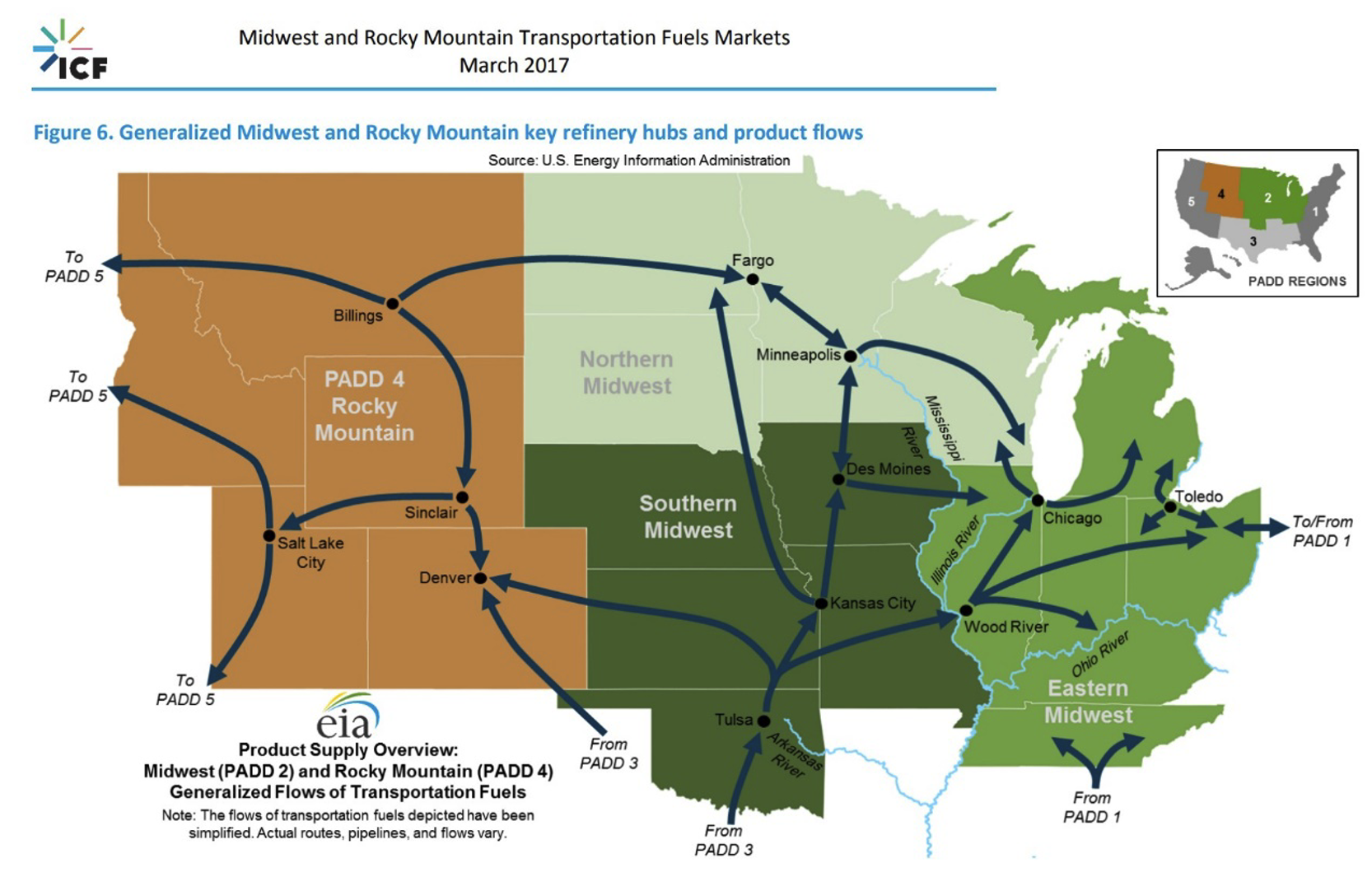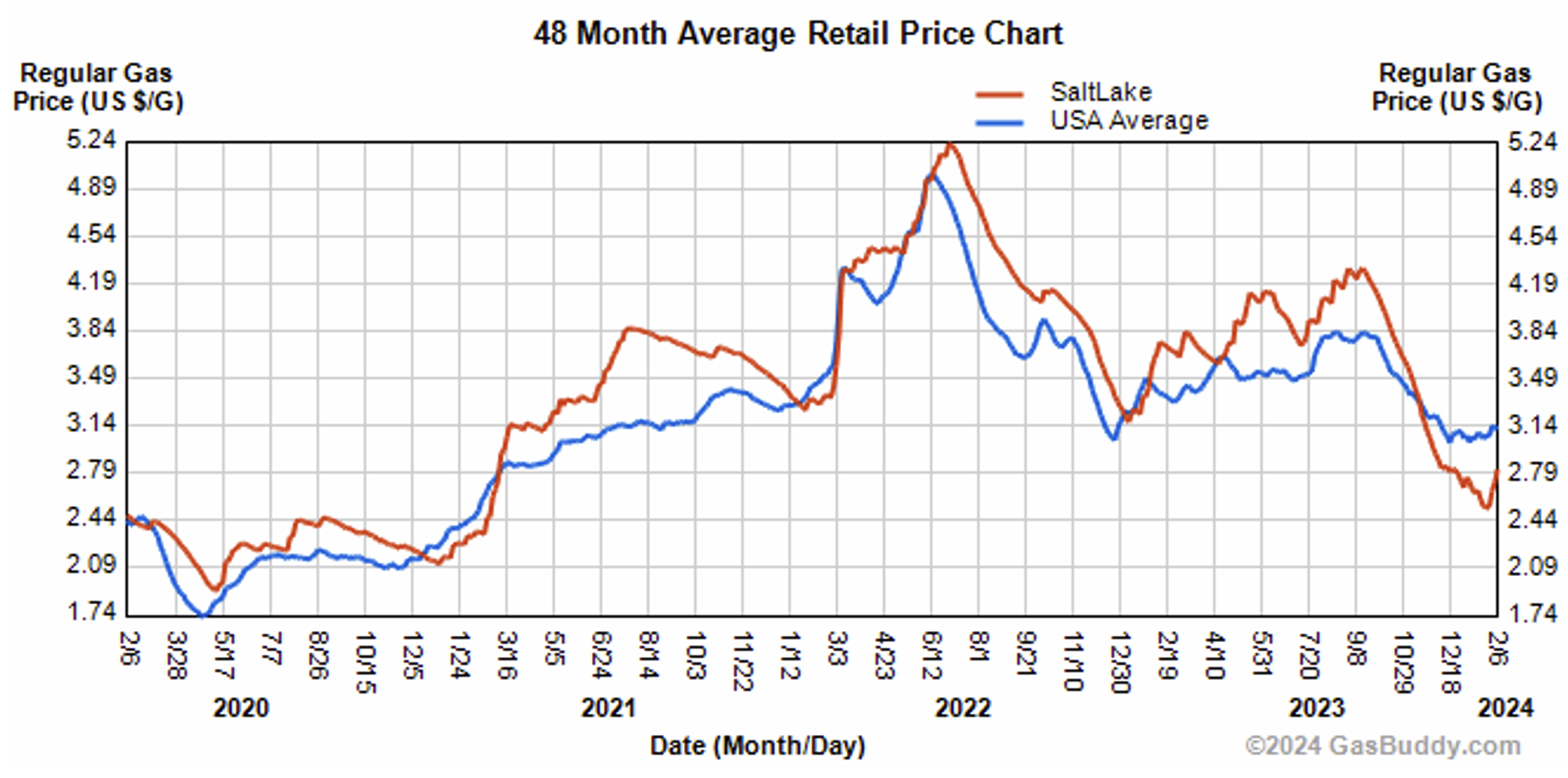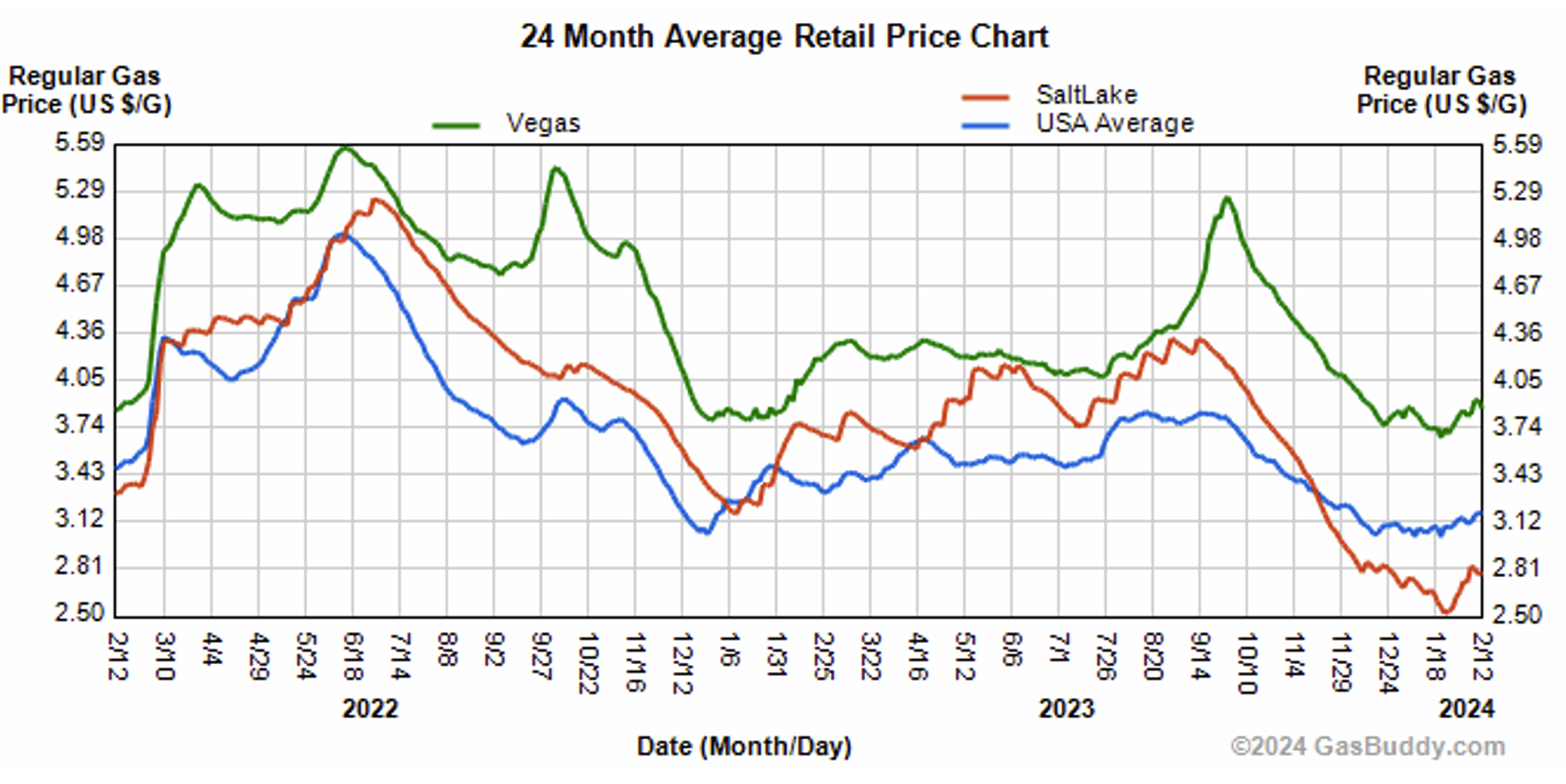The Benefits of Storing Refined Petroleum Products in Utah’s Salt Caverns
Link to article: https://stillwaterassociates.com/the-benefits-of-storing-refined-petroleum-products-in-utahs-salt-caverns/
February 13, 2024
By Christine Martin
The state of Utah has a unique system of salt caverns which can be used to store natural gas liquids (NGLs), refined petroleum products, and feedstocks. The salt caverns are located south of Salt Lake City in Delta, UT. The caverns are underground, so they are more protected from natural disasters, and they allow petroleum products to be stored for longer periods of time due to the lack of oxygen. How could Utah motorists and businesses benefit from utilizing these salt caverns for refined product storage?
The majority of fuels supplied in Utah come from the Salt Lake City (SLC) refining center, balanced by pipeline deliveries from the east as seen in the supply flows map from the EIA, below. Some supply is also railed in from other states, especially on a seasonal basis.

The SLC refining center also supplies fuels to Nevada, Idaho, Colorado, Wyoming, and the Pacific Northwest.
With the SLC refining center being the main supply source, what happens if there is an unplanned outage, or a natural disaster?
The SLC refining center sits on a major fault line, so there is the risk of an earthquake. There was a 5.7-magnitude earthquake in Salt Lake City in February of 2020. The earthquake did require the Marathon Petroleum Refinery in Salt Lake City to be evacuated, but there was no impact on operations. So, there is a risk of future earthquakes impacting the refineries in SLC. There are also risks of unplanned outages that come with any manufacturing process. In those cases – an impact on supply would cause gasoline prices to increase, leading to unhappy motorists. Excess gasoline inventory could be stored in the caverns (as a state or regional strategic fuel reserve) and pulled out to supply the market in the case of an unplanned outage or natural disaster. This would prevent large price spikes in the market and therefore lead to happier motorists. Connecting the caverns to the UNEV pipeline, which moves products from SLC to Las Vegas, would improve logistics costs.
There are also seasonal trends that impact both supply and gasoline prices as seen in this GasBuddy price chart:

Due to differences in seasonal blends, there is more gasoline supply in the winter and less demand, so prices are lower. Lower supply coupled with higher demand in the summer causes seasonal price increases. The whole country experiences these seasonal price spikes, although on average Utah sees higher summer prices – which is where businesses could benefit from having some extra supply on hand. Excess gasoline from both the SLC refining center, as well as gasoline railed in from out-of-state refiners, could be stored in the salt caverns and pulled out during summer months to take advantage of the higher summer prices. There is also a pipeline that runs from Utah into Las Vegas, NV. Las Vegas generally has higher gasoline prices, as can be seen in the following chart:

So, businesses could also benefit from sending stored gasoline into the Las Vegas market to see higher margins, especially during the summer months.
The unique landscape of Utah with these salt caverns has huge potential for increasing the storage of refined petroleum products. Businesses would benefit from taking advantage of the higher margins seen during the summer months. And Utah (and regional) motorists would benefit from having a strategic fuel reserve so that in the cases of unplanned outages or natural disasters, huge gasoline price spikes could be avoided.
Want to dig deeper? Contact us.
